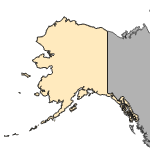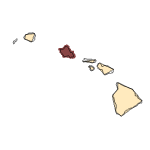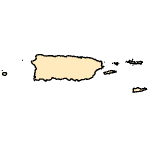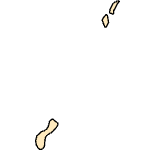Pomacea paludosa
(Florida applesnail)
Mollusks-Gastropods
Native Transplant |
|
Common name: Florida applesnail
Taxonomy: available through
www.itis.gov
Identification: This species is the largest freshwater gastropod native to North America (Burch 1982). It is globose in shape, body whorls are wide, spire is depressed, and the aperature is narrowly oval (Burch 1982). They are brown in color and have a striped pattern. Egg clutches are white in color.
Size: 60 mm in length and width (Burch 1982)
Native Range: Common throughout the Florida peninsula up to the Suwannee River Drainage, and sporadically west from the Suwannee into the panhandle to the Choctawhatchee River Drainage and north into Georgia in to the Flint and Ocmulgee River Drainages (Thompson 1984); Cuba; Hispanola (Dundee 1974).



|

Alaska |

Hawaii |

Puerto Rico &
Virgin Islands |

Guam Saipan |
Hydrologic Unit Codes (HUCs) Explained
Interactive maps: Point Distribution Maps
Nonindigenous Occurrences:
Table 1. States with nonindigenous occurrences, the earliest and latest observations in each state, and the tally and names of HUCs with observations†. Names and dates are hyperlinked to their relevant specimen records. The list of references for all nonindigenous occurrences of Pomacea paludosa are found here.
Table last updated 1/15/2026
† Populations may not be currently present.
Ecology: This species is tropical and amphibious, having both lungs and gills, making it easy to survive dry periods and seasons, where it burrows under the mud (Burch, 1982; Dillon, R. T., Jr. and colleagues 2018). This species is able to store air in it's shell cavity in order to float on the water surface to reach vegetation (Dillon, R. T., Jr. and colleagues 2018). Florida applesnails have separate sexes, with females laying eggs above the waterline on emergent vegetation (Dillon, R. T., Jr. and colleagues 2018).
Means of Introduction: Outside of it's native range, this species has been found in ponds on gulf courses, leading to the thought that the snails were introduced as hitchikers on aquatic plants (Dillon, R. T., Jr. and colleagues 2018), although oher applesnail species are known to be introduced from the aquairum trade (Clench, 1966).
Impact of Introduction: The impacts of this species are currently unknown, as no studies have been done to determine how it has affected ecosystems in the invaded range. The absence of data does not equate to lack of effects. It does, however, mean that research is required to evaluate effects before conclusions can be made.
References: (click for full references)
Burch, J. B. 1982. North American freshwater snails.Walkerana 1(4):217-365.
Clench, W.J. 1966. Pomacea bridgesi (Reeve) in Florida. Nautilus 79(3):105.
Dillon, R. T., Jr. and colleagues 2018. The freshwater gastropods of North America. Internet address: http://www.fwgna.org
Dundee, D. S. 1974. Catalog of introduced molluscs of eastern North America (north of Mexico). Sterkiana 55:1-37.
Thompson, F.G. 1984. The freshwater snails of Florida: a manual for identification. University of Florida Press, Gainesville, Florida, 94 pp.
Author:
Benson, A.J., and C.R. Morningstar
Revision Date: 11/18/2020
Citation Information:
Benson, A.J., and C.R. Morningstar, 2026, Pomacea paludosa: U.S. Geological Survey, Nonindigenous Aquatic Species Database, Gainesville, FL, https://nas.er.usgs.gov/queries/FactSheet.aspx?speciesID=985, Revision Date: 11/18/2020, Access Date: 1/15/2026
This information is preliminary or provisional and is subject to revision. It is being provided to meet the need for timely best science. The information has not received final approval by the U.S. Geological Survey (USGS) and is provided on the condition that neither the USGS nor the U.S. Government shall be held liable for any damages resulting from the authorized or unauthorized use of the information.